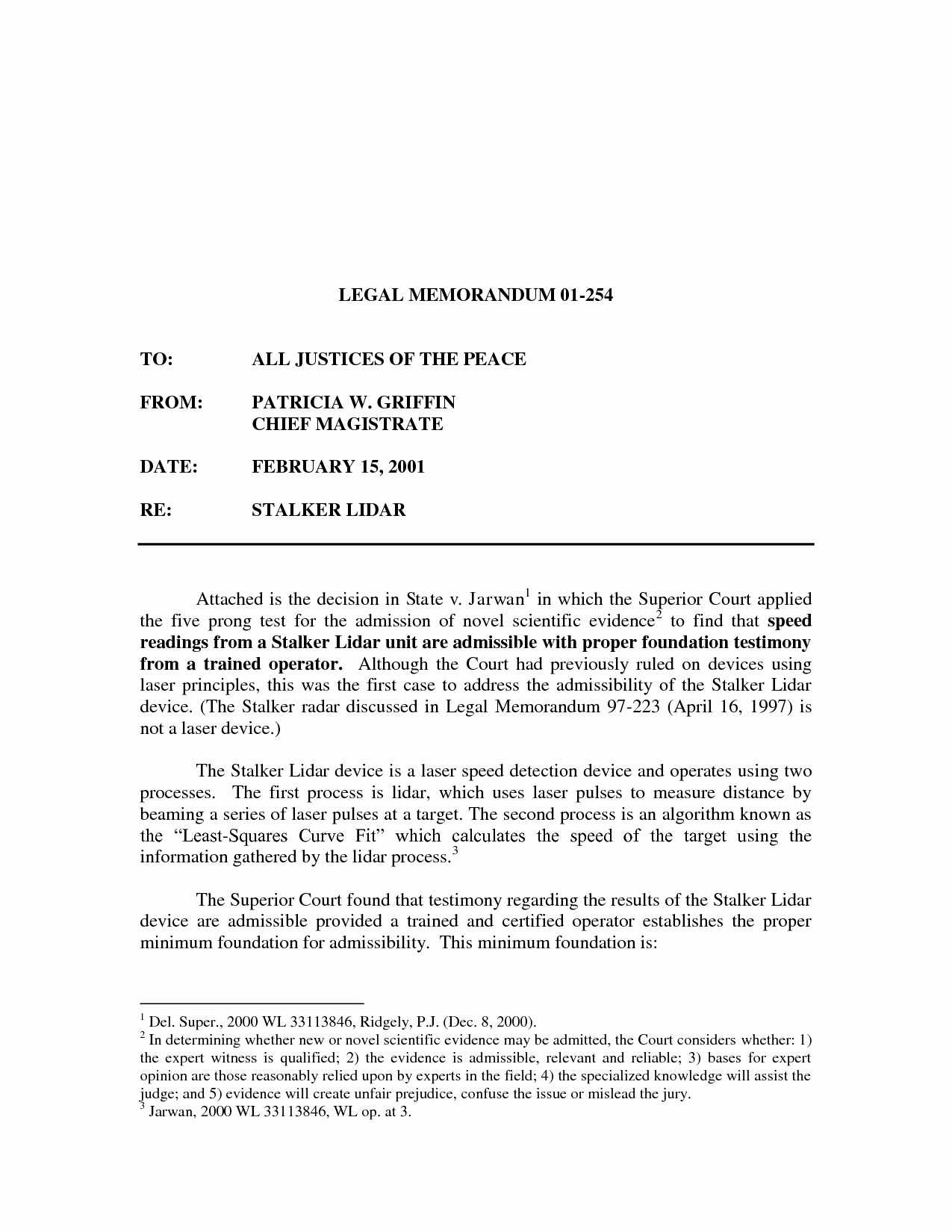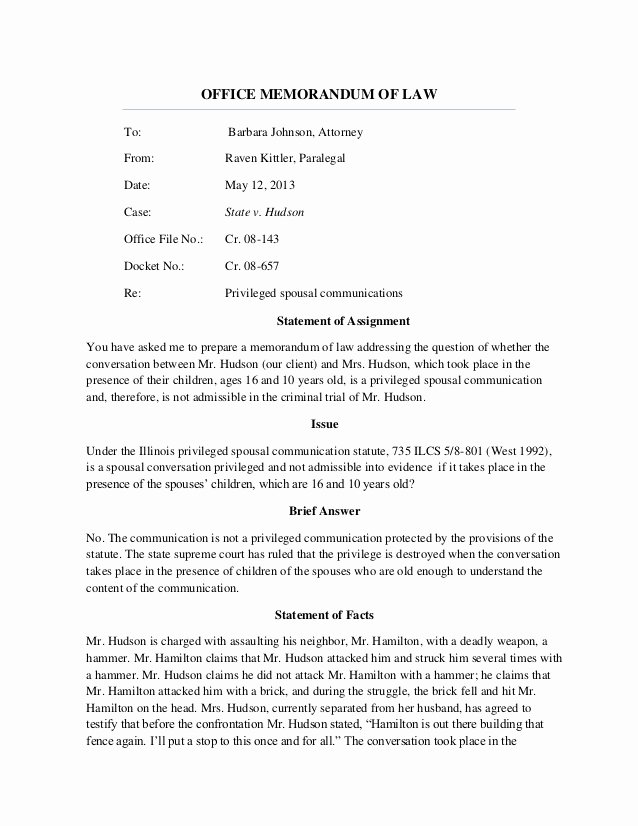
”), refer to important cases by shorthand (“According to Lone Pine Mfg.”), and mention the jurisdiction (“In Texas.
#Example of legal memo code#
Be accurate and concise: name important statutes (“Under Insurance Code § 22.001. State the governing law but skip the case explanations.Ī traditional memo states the legal rule that governs the question, and an e-mail memo should too. If there were numbered questions, use parallel numbering for the answers. You can write a single, short paragraph-three or four lines of text, or you can write the answer and give the reasons in bullet points.

The answer with reasons also serves as critical front-loading in a longer message. Write a thorough answer with reasons, thus ensuring that the body text is complete, easily understood if isolated from the other parts of the message, and readily copied and pasted into other documents. Give the answer with reasons in one paragraph. If there are multiple questions, number them.Īn e-mail memo that assumes the reader knows what was asked and that skips right to the answer has two drawbacks: it’s frustrating for secondary readers, who’ll have to scroll through the thread to find what was asked, and it’s frustrating for the assigning lawyer who’s reading the e-mail days or weeks later. ” Provide enough detail-facts and law-to accurately frame the question, and avoid abstraction. In fact, I like the opening phrase “You asked.

The first line of the body text should restate the question. If your work environment or your boss dictates that you don’t put the answer in the subject line, then just write something specific-think summary, not merely topic. Maybe it would be too easy for others to see maybe your boss doesn’t like it maybe you have three answers to report. It’s not always possible or practical to put the answer in the subject line. This suggestion just takes the idea a little further. You save the reader time and effort, and besides, legal readers appreciate knowing the answer before they get into the analysis. Use the subject line to give key information.įor a short, single-issue e-mail memo, I recommend writing a condensed, specific subject line that states the answer. Give yourself time to condense and tighten. Remember: a more concise piece of writing is often harder to produce than a long one.

Some lawyers dislike reading attachments, and attachments don’t always display well on tablets or phones. Of course, you could write a short message and attach the longer memo, but before you do, check with the assigning lawyer. Sometimes a longer message is necessary, but it can still be efficient and effective if you front-load key information. Try following the “no scrolling” or “one screen” rule: Readers get everything they need without scrolling past the opening screen. No one likes to read long e-mail messages.

Reject any of these guidelines if your boss prefers something else. When you ask for an e-mail memo or when you write one, what guidelines do you follow? I propose some here, but it’s important to know your audience. By tradition, when lawyers write a legal analysis for internal use or as a decision-making tool, they write a memo.


 0 kommentar(er)
0 kommentar(er)
